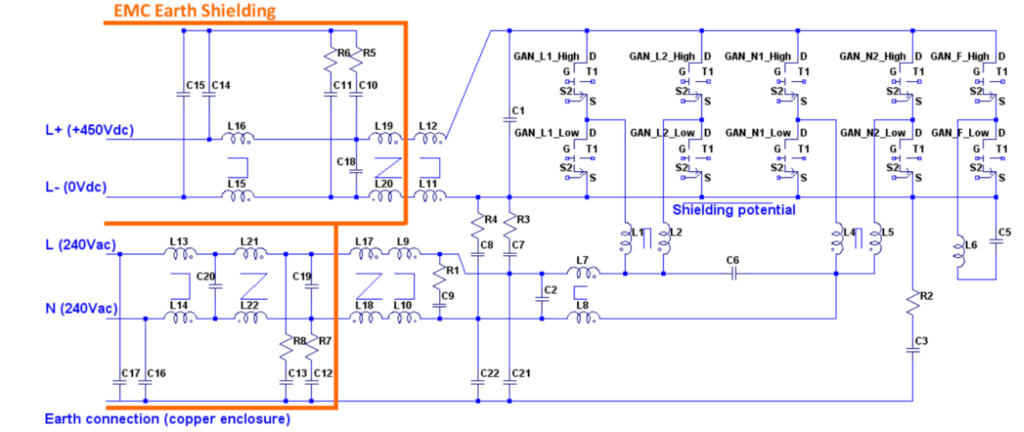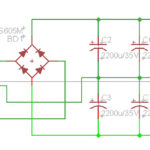Peer-to-peer, engineer-to-engineer questions and answers from the EDABoard.com engineering community around power electronics. Click the “Read more” link and follow the entire conversation and maybe add your two cents by logging in to EDAboard.com
1.5kw DC to DC boost converter circuit – I want to build my own full-bridge dc to dc converter with 12v in and 400v output for 1.5kw load. I’ll be using a sg3525ic to drive ir2113 MOSFET driver, but I need help with a circuit layout. The only circuit I could find is this from tahmid. This shows an input voltage of 300volt and that’s why I’m uncertain if I can use this circuit for a 12-volt input? Read more
Buck inductor losses – I want to calculate core loss in buck inductor (powder core) but this core is in dc bias condition and in datasheet there is a peak ac flux density vs core loss”curve. I calculate B for inductor by this formula B=N*I/R*A.but can I use that curve to calculate core loss? if not how can I calculate core loss? Read more
LT1248 PFC controller – Do you think the Voltage error amplifier in LT1248 can be used as a buffer by shorting pins 7 and 11?
Does it look like there is a diode in the way? Read more
Four quadrant operation – I am a bit confused about the motor operating in the four quadrants. Is this operation-specific only to DC motor or applicable to synchronous AC motors as well? Read more
Power pulse generate 30V 400A – Please suggest how to generate pulse with 100-200us rise and fall time, 500-1500us duration. Voltage/current precision regulated 0-30V, 0-400A depending of load. Read more
Offline isolated two transistor forward with synchronous rectifier control circuit – There are virtually no ICs on the market that manage synchronous rectifier drive for isolated offline Two Transistor Forward Converters, or even for any other type of offline isolated converter. (eg Flyback, LLC, Full Bridge). This is a very bad state of affairs. As such, we have designed our own discrete synchronous rectifier drive circuitry. This is as attached in the LTspice simulation and schematic. All that’s basically needed is to invert and delay and trim the waveforms sufficiently to achieve the correct dead times between the respective gate drives, and of course, reverse overcurrent protection. However, a microcontroller is needed, one on the primary and one on the secondary. The secondary one simply manages the reverse overcurrent latch. Read more
SMPS through-hole to SMD package – I have a 12V-1 Amp SMPS design which I assembled using through-hole components. All the resistors are in 1/4 watts, Zener diode is 1/2 watts. But now the same SMPS design I converted in SMD package. The iC MJE13005 burns out in just a few seconds and SMPS stops working. Read more
Coupled inductors for filtering – What are the tradeoffs to consider when deciding whether to use coupled differential mode, coupled common mode or discrete inductors for filtering in AC applications. Read more
Synchronous two transistor forward goes wrong – The attached is a picture of the inductor current in a synchronous two transistor forward converter just after going from full load to no load. (its an LTspice sim)/ As you can see the inductor current suddenly reverses to a badly high level due to the fact that the LT1681 has “malfunctioned”….the LT1681 holds the “catch” synchronous rectifier ON for far too long. If the Vout had been higher, then this inductor current reversal would have been even worse, if not catastrophic. The LT1681 is a $6 chip and for that price its amazing to see poor performance like this. Do you know of other synchronous rectifier control chips which don’t allow this behaviour?
90V DC source for DC motor – We have a DC motor which has a specification as follows:
Rated Voltage : 90V
Rated current : 2.8A
Starting current : 45A
This will be running using a brushed DC motor controller. Can anyone tell me an SMPS or an industrial converter from which I can get 90V DC. In normal cases, we are buying directly from SMPS manufacturers like Meanwell, Siemens or Schneider electric. But in this, no one has 90V DC SMPS. Read more







Leave a Reply